| ||||||||||||||||||||||||||||||||||||||||||||||||||||||||||||||||


The Cultural Landscape of Kaali Meteorite Crater Field, Island of Saaremaa, Estonia
|
The Kaali Meteorite Crater Field is on Saaremaa, the largest island in Estonia. It was the last giant meteorite to fall into a densely populated area. Its fall in the Bronze Age or even earlier, has left clear traces not only in the landscape, but also in folklore. In the centre of a field of nine craters there is a main crater of 110-metre diameter and 22-metre depth. On its walls a fortified settlement was founded. In the Iron Age, the crater was surrounded by a strong stone wall and was probably used as a place of water sacrifices. The Kaali Crater Field as a phenomenon needs introduction to the integrating European culture both by virtual and intellectual cultural paths - as a website and as an interactive CD, which will enable to demonstrate visually the process of the catastrophe and its effect on natural environment and human society. The results of the joint geological-archaeological expedition's research are worth publishing in an article in the joint book about the results of the project and also as eye-catching flyers for tourists willing to make a trip from crater to crater and other archaeological monuments in the vicinity. The physical paths on site require an additional updated information system, which would serve as the basis for the future meteorite museum's exhibition. Opening more views of the imposing crater wall and covering details unearthed during research excavations with a roof for better display are important steps in establishing physical cultural paths. ResearchThe joint geological, paleo-zoological, paleo-geographical and archaeological research in the bottom of the main crater is of great scientific value and holds much potentialas a tourist attraction with its cognitive side. Drilling and excavation work at the presumed sacrificial place at the height of the tourist season, proved an attractive and accessible wayfor the public to access the site and help promote both the scientific work. public awareness and interest in the site. The use of the GIS for the precise mapping of the vicinity of the crater field and the georadar search for other possible craters and remains of meteorites covered by earth have a great effect on the maintenance and design of the landscape besides their scientific value. CommunicationThe maintenance work and site protection create better service conditions for tourists. Printed matter and modern multi-media will promote further dissemination of Kaali to the public. It is also important to raise schoolchildren's interest. They can gain knowledge through attractive media and visit the main tourist site of their native place. They will appreciate the monument more after doing practical work on the spot, like seasonal and permanent maintenance work.
Further information on Saarema
Project team: |
|
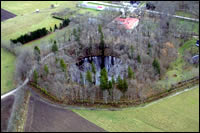
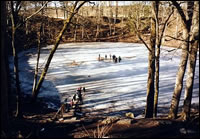
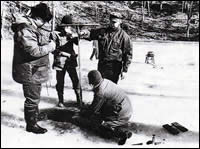
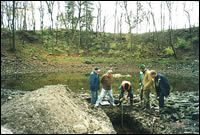
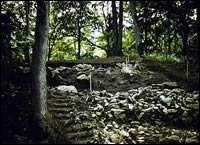
|
|
|
|
|
